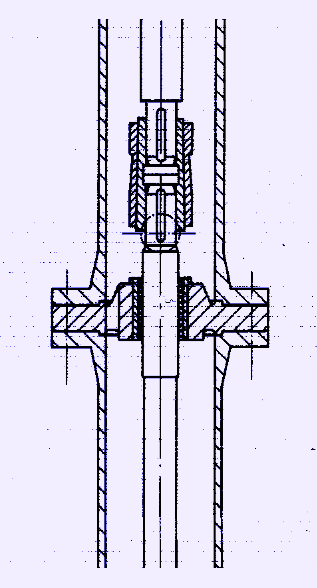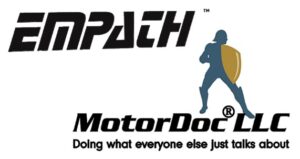All the book-learning in the world will fail us if we don’t use common sense. We could also say that we need to think things through and should recognize that intuitive logic can lead us astray. If that sounds like semantic banter, let’s zero in on three practical field examples that illustrate the issues at hand.
1. OFFSHORE FIRE WATER PUMP TESTING
This first example involved a diesel engine with an idle speed of approximately 600 rpm and a normal operating speed of 1,800 rpm. The engine was connected to the horizontal input shaft of a right-angle gear unit with a 1:1 speed ratio; the output shaft was connected to a multistage vertical firewater pump. The pump was designed and installed with a series of flanged sections of pipe forming a long vertical column; its pipe sections and pump shaft lengths had been manufactured in 10-ft. increments. At each of the flanged joints, carbon-filled PTFE (Teflon) “spider” bearings were installed to keep the shaft aligned and concentric with the 102-ft. total vertical column length of the pump (Fig. 1); the carbon-filled PTFE spider bearings were lubricated by the sea water being pumped. Fig. 1. Spider bearing sandwiched between two flanged pipe sections. Two threaded shaft sections and a surrounding coupling are shown above the bearing.

Fig. 1. Spider bearing sandwiched between two flanged pipe sections. Two threaded shaft sections
and a surrounding coupling are shown above the bearing
Things were going well until an anonymous technician (or engineer) was engaged in the periodically scheduled fire pump test. He decided to treat the equipment gently and started the engine, allowing it to idle for an extended warm-up run at 600 rpm. Unfortunately, at that low speed the height of the liquid column produced by the vertical pump was insufficient to wet all the spider bearings. As a result, whichever spider bearings remained above the water level inside the pump column were damaged and had to be replaced.
2. SIMILAR EXPERIENCES EXIST ELSEWHERE
Our second example involves a steam-turbine-driven, 14-stage centrifugal pump in light hydrocarbon service. It was being started up at a refinery in the central United States. In this example, the operators wanted to “take-it-easy” on the machines and slow-rolled the pump-and-turbine set as part of the initial commissioning. But operation at slow speed caused the stainless-steel wear rings to make rubbing contact, causing the pump to seize well before its normal operating speed was reached.
Galling was severe enough to require rebuilding with new wear rings. Of course, incorporating stationary wear rings made of oriented carbon-fiber filled perfluoro-alkyl (sold as VespelCR-6100) would have eliminated the problem and/or other preventive measures could have been engineered with a bit of forethought. So, be careful when somebody argues for taking it easy on equipment: Take time to think it through. One significant advantage of using electric motors is that the driven fluid machine comes up to speed quickly. The wear rings then act like bearings and help in centering the shaft.
3. ON THE HUNT FOR BTUS AND KILOJOULES
In this third example, a team of ECEs (energy-conservation engineers) was engaged in a search for reduced steam consumption. In the process, they issued guidelines to lower steam turbine slow-roll speeds to the bare minimum needed to keep the casings hot for imminent starts. After the ECE team issued an edict that small steam turbines should be slow rolled at no more than 60 rpm, numerous sleeve-bearing failures resulted. Reason: When slow-roll speeds are too low, the required oil wedge cannot establish itself. An oil wedge is needed to keep shafts from making direct contact with the low-melting-point bearing alloys typically used in sleeve bearings. Also, a certain oil flowrate will be needed to remove heat from the bearing. By the time a reliability professional was consulted, considerable damage had been done by the well-meaning, but clearly uninformed action of the ECEs.
AUTHOR’S APPEAL TO MANAGERS
The message here is really an appeal to management. An organization is made up of individuals having process/operations know-how and people with significant mechanical/machinery experience. The different job functions must communicate and cooperate.
Beware of traditionalists who have no time for perfluoro-alkyls and other strange-sounding materials. As they are nearing retirement, consider involving younger engineers who really paid attention in college classes where basic physics was taught. Seek them out and ask them to advise you on new materials. Let them participate in troubleshooting or technical strategizing sessions, where practicing the “three Cs,” i.e.,“communication,” “cooperation,” “consideration” (CCC,) is the top business priority. If we don’t make room for and actively support the three Cs, we risk spending 90% of our time on unproductive finger-pointing, pre-emptive chat, and excessive rationalizing.TRR
Editor’s Note: Click Here To Download A Full List Of Heinz Bloch’s 24 Books
ABOUT THE AUTHOR
Heinz Bloch’s long professional career included assignments as Exxon Chemical’s Regional Machinery Specialist for the United States. A recognized subject-matter-expert on plant equipment and failure avoidance, he is the author of numerous books and articles, and continues to present at technical conferences around the world. Bloch holds B.S. and M.S. degrees in Mechanical Engineering and is an ASME Life Fellow. These days, he’s based near Houston, TX.
Tags: reliability, availability, maintenance, RAM, root-cause analyses, RCA, root-cause-failure analysis, RCFA, Taproot.com



